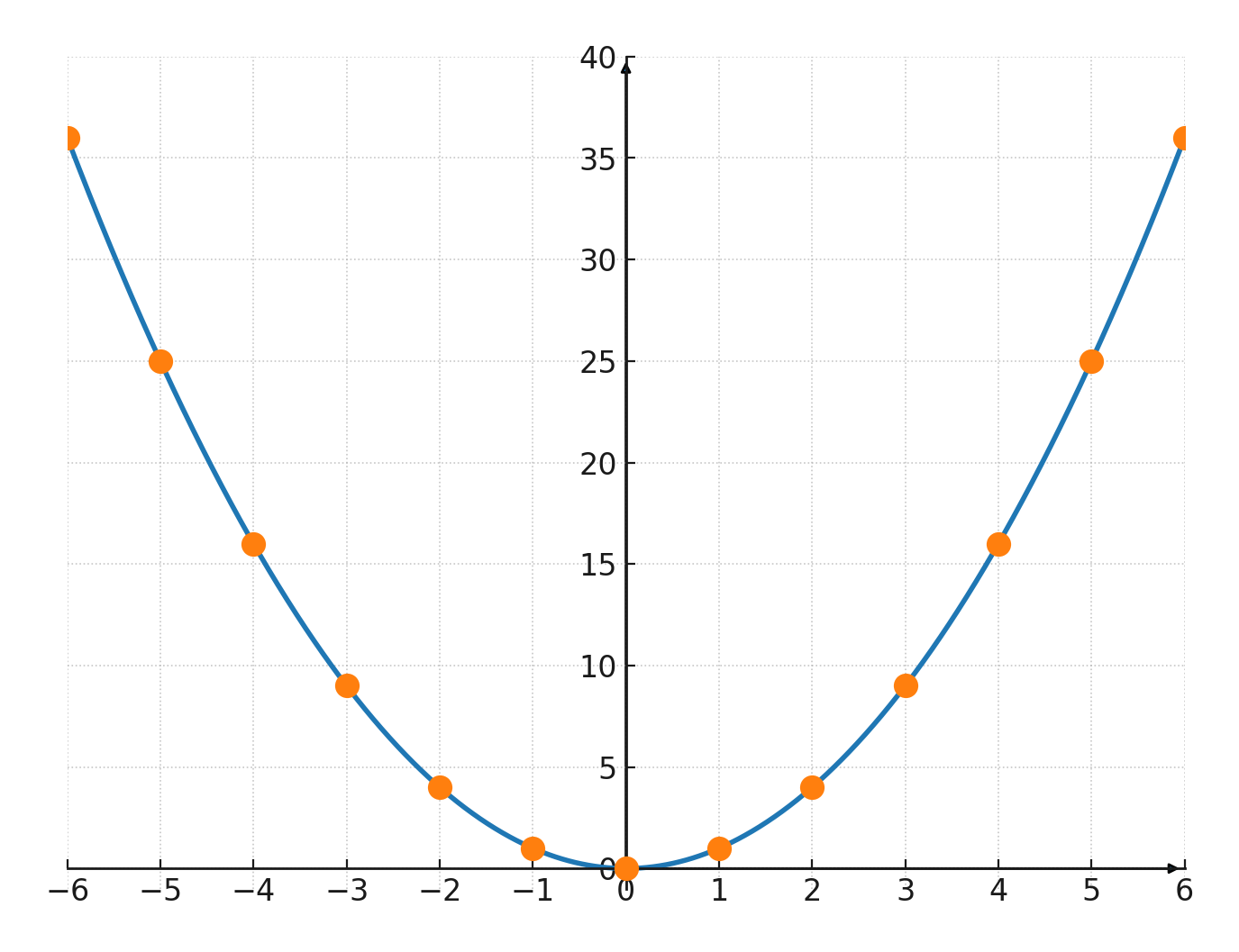Square numbers
A Square Number is the result of raising a Number to the second power.
In other words, a Square Number has the form \(\large n^2\), where \(n\) is a Natural Number.
Example
\(\large 3^2 = 9,\quad 6^2 = 36,\quad 10^2 = 100\)
If you take the Square Root of \(X\) and the result is a Whole Number, then \(X\) is a Square Number. For example, \(\large \sqrt{81} = 9\), so 81 is a Square Number.
Geometric meaning
A Square Number can be seen as the area of a Square with side length \(n\). For example, 16 is the area of a Square with side length 4.
\(\large \sqrt{16} = 4\)
Parabola in the coordinate system
The points \((n, n^2)\) form the graph of the function \(\large y = x^2\), which is a Parabola.

Table of the first Square Numbers
| Number (root) | 1 | 2 | 3 | 4 | 5 | 6 | 7 | 8 | 9 | 10 |
|---|---|---|---|---|---|---|---|---|---|---|
| Square Number | 1 | 4 | 9 | 16 | 25 | 36 | 49 | 64 | 81 | 100 |
Patterns in Square Numbers
Difference between two consecutive Square Numbers:
\(\large (n+1)^2 - n^2 = 2n + 1\). The difference is always an odd Number.
Sum of the first \(n\) odd Numbers:
\(\large 1 + 3 + 5 + \cdots + (2n-1) = n^2\). For example \(\large 1+3+5+7+9 = 25\).
Last digit:
A Square Number can only end with 0, 1, 4, 5, 6 or 9.
Modulo 3:
A Square Number is either divisible by 3 or one more than a multiple of 3. That is \(\large n^2 \equiv 0\) or \(\large 1 \pmod{3}\).
Square Numbers and Prime Factors
A Number is a Square Number if and only if all exponents in its Prime Factorization are even Numbers.
For example \(\large 900 = 2^2 \cdot 3^2 \cdot 5^2 = (2\cdot 3\cdot 5)^2\), so it is a Square Number.
Connections to other topics
Pythagoras:
Square Numbers appear in Pythagoras’ Theorem \(\large a^2 + b^2 = c^2\). A classic example is \(\large 3^2 + 4^2 = 5^2\), that is \(\large 9 + 16 = 25\).
Difference of Squares:
\(\large a^2 - b^2 = (a-b)(a+b)\) is often used in rewriting and factorization.